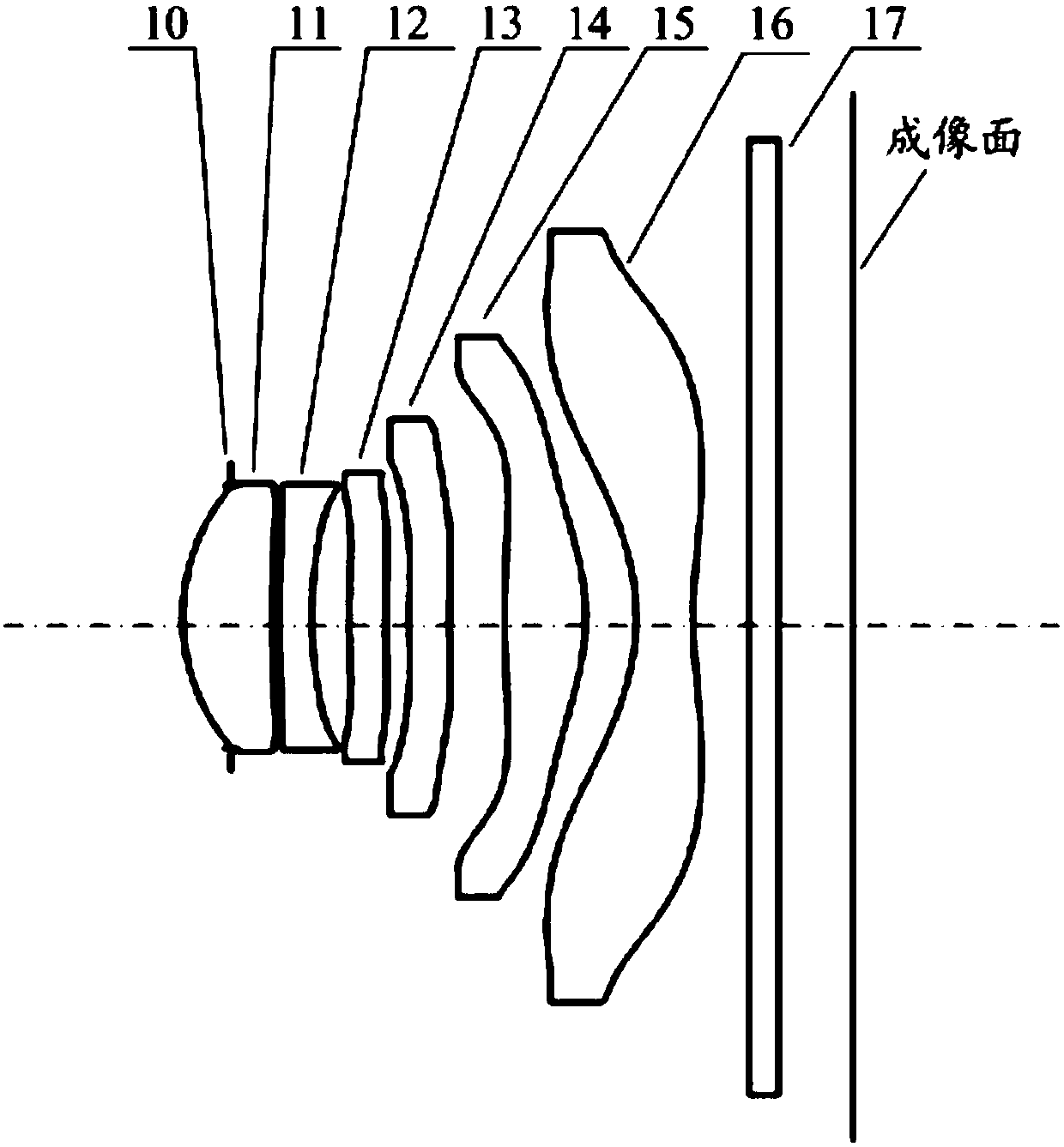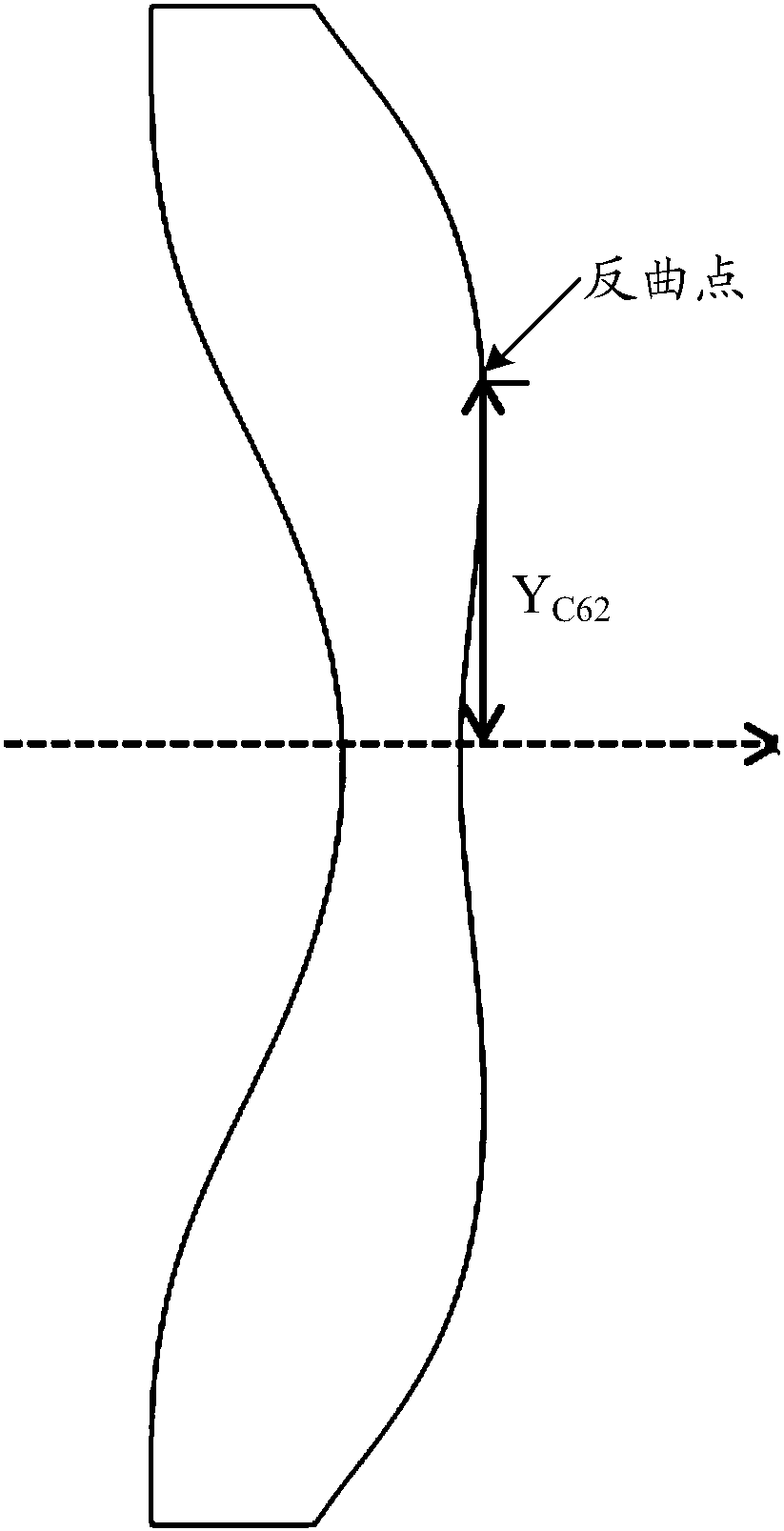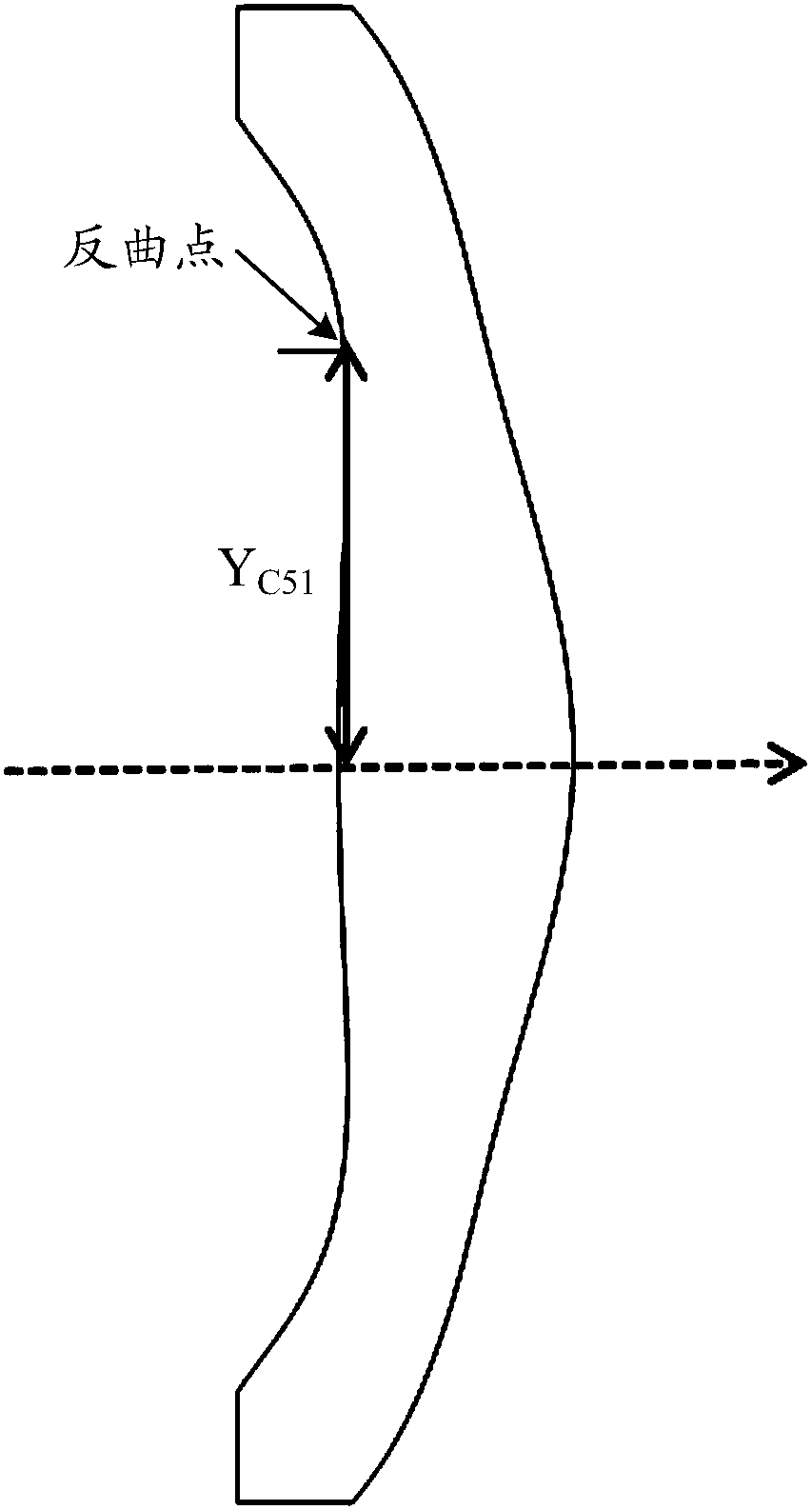Optical imaging lens and photographing equipment
An optical imaging lens and lens technology, which is applied in the field of optical lenses, can solve problems such as the inability to further meet high-standard imaging requirements, and achieve the effects of shortening the total optical length, correcting astigmatism, and reducing image distortion
- Summary
- Abstract
- Description
- Claims
- Application Information
AI Technical Summary
Problems solved by technology
Method used
Image
Examples
no. 1 example
[0089] Please refer to figure 1 , is a schematic diagram of the optical imaging lens provided by the first embodiment of the present invention. As can be seen from the figure, the optical imaging lens includes a first lens 11, a second lens 12, a third lens 13, a fourth lens 14, a fifth lens 15 and a sixth lens arranged in sequence along the optical axis from the object side to the image side 16;
[0090] The first lens 11 has a positive refractive power, and its object-side surface is convex;
[0091] The second lens 12 has a negative refractive power, its object-side surface is convex, and its image-side surface is concave;
[0092] The third lens 13 has positive refractive power, its image-side surface is concave at the near optical axis, and the image-side surface has at least one inflection point;
[0093] The fourth lens 14 has negative refractive power, its object-side surface is convex at the near optical axis, its image-side surface is concave at the near optical a...
no. 2 example
[0111] Please refer to Image 6 , is a schematic diagram of the optical imaging lens provided by the second embodiment of the present invention. As can be seen from the figure, the optical imaging lens includes a first lens 21, a second lens 22, a third lens 23, a fourth lens 24, a fifth lens 25 and a sixth lens arranged in sequence along the optical axis from the object side to the image side 26;
[0112] The first lens 21 has a positive refractive power, and its object-side surface is convex;
[0113] The second lens 22 has a negative refractive power, its object-side surface is convex, and its image-side surface is concave;
[0114] The third lens 23 has positive refractive power, its image-side surface is concave at the near optical axis, and the image-side surface has at least one inflection point;
[0115] The fourth lens 24 has negative refractive power, its object-side surface is convex at the near optical axis, its image-side surface is concave at the near optical ...
no. 3 example
[0132] Please refer to Figure 9 , is a schematic diagram of the optical imaging lens provided by the third embodiment of the present invention. As can be seen from the figure, the optical imaging lens includes a first lens 31, a second lens 32, a third lens 33, a fourth lens 34, a fifth lens 35 and a sixth lens arranged in sequence along the optical axis from the object side to the image side 36;
[0133] The first lens 31 has a positive refractive power, and its object-side surface is convex;
[0134] The second lens 32 has a negative refractive power, its object-side surface is convex, and its image-side surface is concave;
[0135] The third lens 33 has positive refractive power, its image-side surface is concave at the near optical axis, and the image-side surface has at least one inflection point;
[0136] The fourth lens 34 has negative refractive power, its object-side surface is convex at the near optical axis, its image-side surface is concave at the near optical ...
PUM
 Login to View More
Login to View More Abstract
Description
Claims
Application Information
 Login to View More
Login to View More - R&D
- Intellectual Property
- Life Sciences
- Materials
- Tech Scout
- Unparalleled Data Quality
- Higher Quality Content
- 60% Fewer Hallucinations
Browse by: Latest US Patents, China's latest patents, Technical Efficacy Thesaurus, Application Domain, Technology Topic, Popular Technical Reports.
© 2025 PatSnap. All rights reserved.Legal|Privacy policy|Modern Slavery Act Transparency Statement|Sitemap|About US| Contact US: help@patsnap.com



